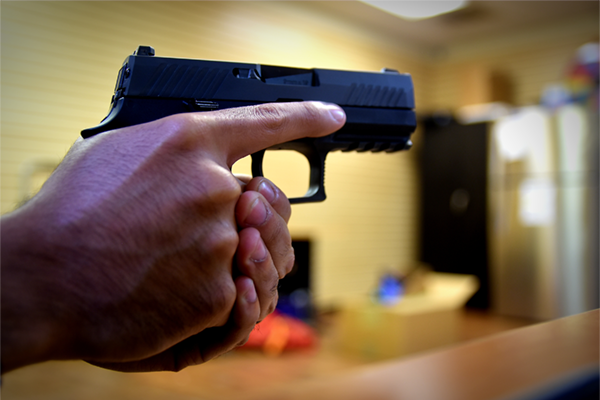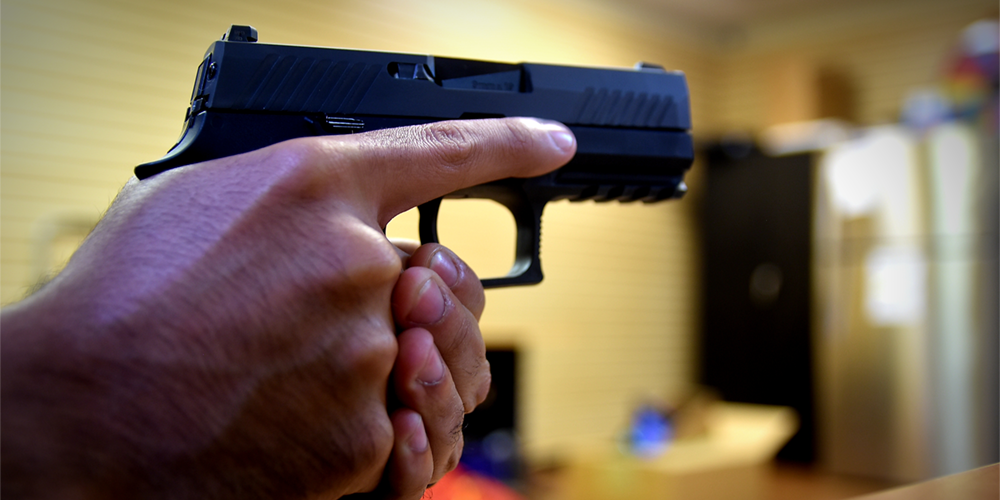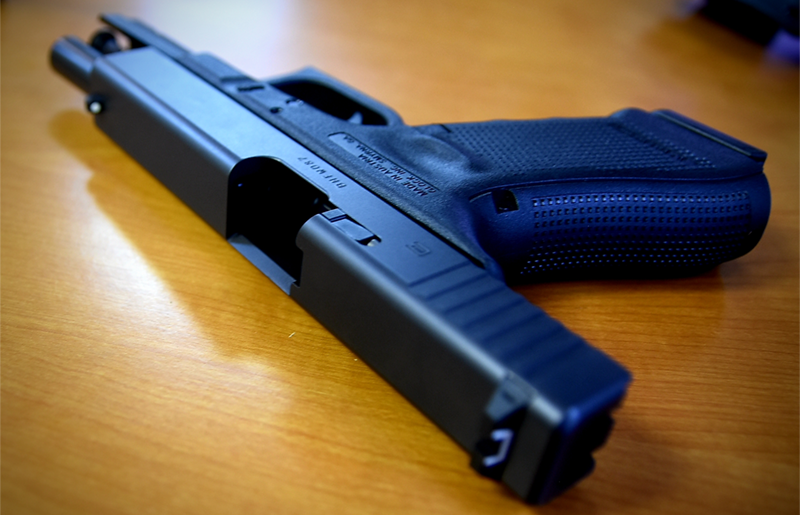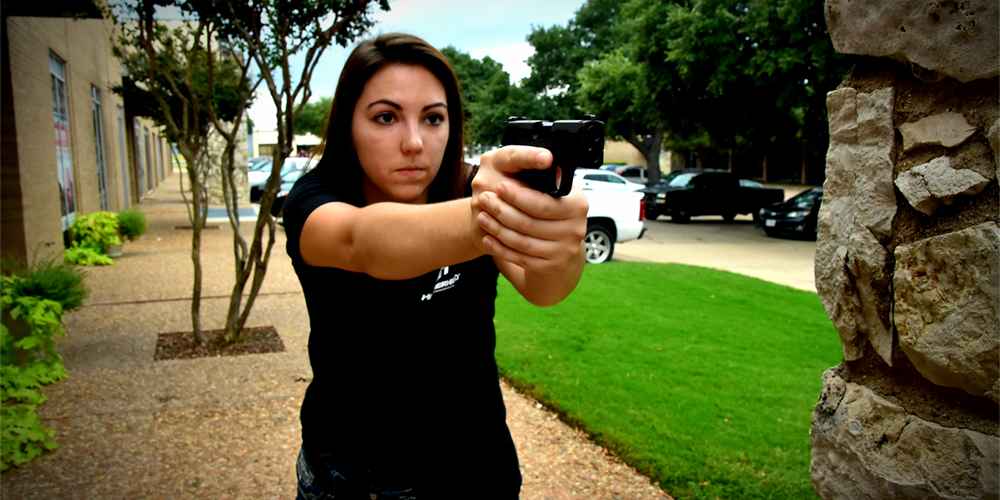
The four key rules of firearm safety and why they are important.
By Vic Laboy
Most everything we do in life is governed by a set of rules. From traffic lights to office protocols, rules are inescapable. In the firearms industry there are four rules everyone should know and exercise to ensure both personal safety and the safety of those around us. Often, this is assumed as common knowledge; however, beginners may not be aware of the importance of each rule. No matter your skill level, we must all live by these rules to maintain a safe shooting environment.
Rule 1 – Keep Your Finger Off the Trigger Until You Are Ready to Fire
The first rule is to keep your finger away from the trigger until you are ready to fire. This important approach helps prevent a negligent discharge. Notice the difference between “accidental” and “negligent.” Placing your finger on the trigger without the intent to fire can have catastrophic and potentially fatal results. This is especially crucial when handling firearms with more “sensitive” triggers, like the Sig Sauer 1911 or single-action revolvers. If the trigger is pressed due to lack of trigger discipline, the risk of a negligent discharge increases.

Whether at home or the range, you must always exercise proper trigger discipline to avoid a misfire striking an unintended target. Your finger should only contact the trigger once you are in proper position, ready to fire. This is not only safe practice at the range but should be how you handle a firearm every time. Regardless of where your firearm is positioned, maintain proper trigger discipline until you are ready to fire. Should you experience a negligent discharge that strikes an unintended target, you could be held legally liable for any damages incurred from the incident.
Rule 2 – Treat Every Firearm Like it is Loaded
In addition to trigger discipline, you should always treat a firearm like it loaded, no matter the situation. Annually, countless individuals are injured or even killed by a misfire where the operator is unaware of a chambered round. Even police officers have been known to experience such accidents. This can happen anywhere and anytime, even when cleaning your firearm. For example, conducting a basic field strip on a Glock 19 requires you to depress the trigger to remove the slide. If you did not safety check your weapon, a chambered round will fire off as these pistols do not have a magazine disconnect. This means the weapon is capable of firing without the magazine inserted. It is imperative that you remain aware of the firearm’s condition to prevent mishaps.

Always perform a clearance check when a firearm is handed to you, no matter how certain you are that it is clear of all ammunition. For maximum safety, point the muzzle in a safe direction, lock the action to the rear and visually inspect the chamber for rounds. Once this is complete, remove the magazine if applicable and proceed with inspecting or cleaning. Never place your fingers or appendages into an open chamber. It can be quite painful if the bolt or slide releases forward on your finger while in the chamber. You do not want to unintentionally depress the bolt catch on your Ruger AR-556 sending the bolt forward on your finger. Once you have successfully performed a clearance check, you may now safely inspect and handle your pistol or rifle.
Rule 3 – Know Your Target, What Lies Beyond And What Is To The Left And Right
When you’re at the range, it’s easy to forget that the staff works hard to create a safe area for shooting. Although this is a controlled environment with trained staff on hand, you must revert to remedial tactics and assist them in maintaining a safe environment. In a defensive scenario or firing in an area without this backstop, you must remain aware of what lies beyond your target as well as to the left and right. Rounds are capable of penetrating through your target and can strike an unintended target, such as an innocent bystander, building, or vehicle. If you do not consider this aspect, you can face legal action for damaged property or an injured person. This is just as important at the range as in a self-defense situation.
At home, you must consider the Federal HST 9mm may penetrate through drywall and into your neighbor’s house. If this occurs in a public area, it may strike a passerby or enter a vehicle. In addition to knowing your target and its surroundings, you must utilize the proper ammunition for maximum efficiency. FMJ’s should only be used at the range as these are designed for continuous penetration and do not have preventive measures to avoid overpenetration. Hollow points are quite the opposite and are designed to expand on impact to remain in the threat with minimal risk of overpenetration. Assess the situation prior to engaging to reduce the risk of legal repercussions after the fact.
Rule 4 – Keep Your Barrel in a Safe Direction
Last but certainly not least, never point your firearm at anything you are not willing to destroy. Even after clearing the weapon, best practice is to always keep it pointed in a safe direction, loaded or unloaded. Range etiquette is to always keep your barrel pointed downrange. If you rest your pistol on the bench and a round discharges from the weapon, it is best to direct the round towards the backstop rather than those around you. Your range safety officer (RSO) may remind everyone of this during a cold range to emphasize the importance of this action to new shooters.

Remember that precision-based ammunition will follow the same path the barrel is directed and has the potential of striking someone or something miles away. Therefore, we advise against the ludicrous act of firing a pistol into the air, which is always a mistake. This rule carries over to your local gun store as well. When examining a potential new purchase, keep the barrel pointed away from the associate showcasing the firearm as well as customers around you.
Final Regards
We hope this explains the importance of safe firearm handling and answered any safety questions you might have. It is important to remember no rule is more important than the next and all should be exercised together. Whether you are making your first purchase or firing your latest addition to collection, always consider each of the four rules of firearm safety to keep a safe and fun environment. As always, train hard, train smart, and stay safe.




Leave a Reply